Household armchairs will do
The first dental chairs were probably household chairs.
In the 18th century, there were some primitive attempts to design furniture for the specific purpose of dental treatment, as these barber surgeon chairs from the Wellcome Museum show (photos by Gary Smith):
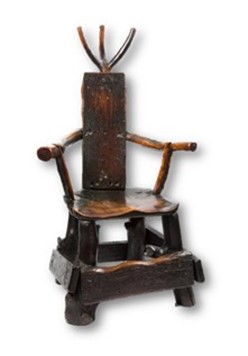
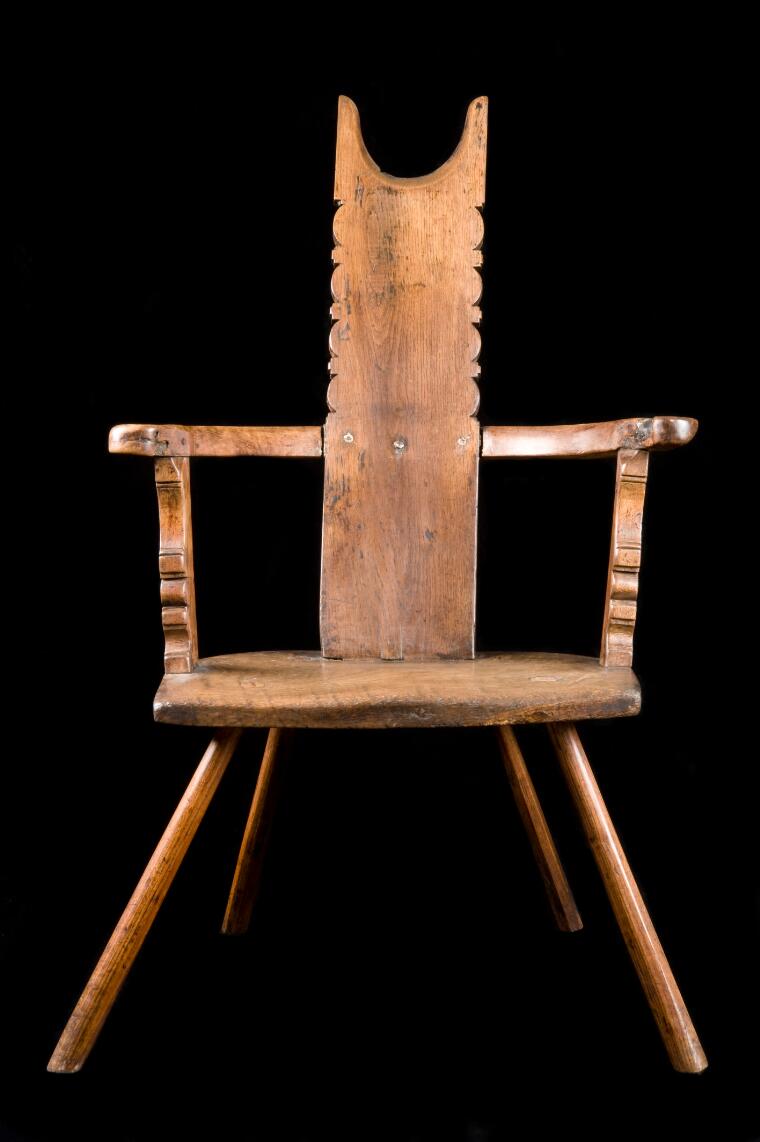
Pierre Fauchard, who is known as the father of modern dentistry, recommended one with arms for the patient to grab onto, and with a back high enough for the neck to rest. Rocking chairs were also sometimes repurposed as they allowed a bit of tilt.
One of the first dental chairs was fabricated by the dentist Josiah Flagg in 1790 by modifying a Windsor writing chair. The patient's comfort and dentist's efficiency were improved by adding a moveable headrest and widening the armrest to allow instrument placement.
An inexpensive dental chair could also be made by attaching a simple headrest to a wooden chair: this was ideal for the itinerant dentist.
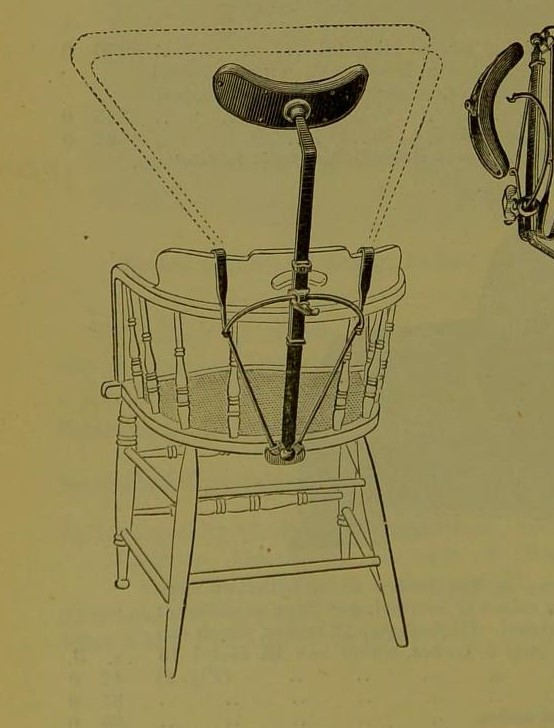
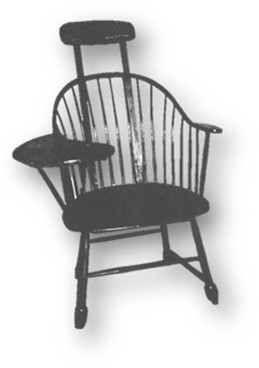
The first recliner: Snell's Operating Chair
In 1830s England, James Snell devised an adjustable chair.
Snell's invention had an up-down seat, a footstool, and a backrest that could go forward and back. It was the first ever dental recliner! Snell even added a rudimentary tray to hold instruments, a mirror and a candle holder.
After using a common armchair for years, Snell had grown increasingly frustrated with its inconvenience: to his patients and his own movements. He decided to build himself an 'operating chair' that suited him better.
"No part of the apparatus of the dentist is of more importance to his success than a good operating chair..."
At that time, dentists worked standing up next or behind the chair. In his 1831 work, Snell describes what the professional dentist has been missing so far:
“First, the chair should be (...) conducive to the patient’s ease, and the convenience of the operator. Secondly, it should have attached to it all the more cumbrous articles which may be required in operating and which cannot be held in the hand or disposed of without inconvenience, arranged that they will be, as it were, dumb waiters upon the operator. Thirdly, to ensure firmness of the patient’s position, an apparatus upon which the feet may rest, whether the patient is sitting high or low or whether his legs are long or short.” Snell then goes on to detail his invention, including how his movable table finally relieved the patient from having to hold a candle when the dentist required.
Ref:. A practical guide to operations on the teeth. James Snell (1831). University of Bristol. b21444407 CC.
Commercial chairs
According to James Wynbrandt’s Excruciating History of Dentistry, the first commercially manufactured dental chairs were not available until 1850, when the needs of dentistry started to be met by wider industrialisation in the United States and Britain.
In 1844, Samuel Stockton White opened the S.S. White Manufacturing company, and expanded production from tooth moulds to instruments and furniture.
Claudius Ash & Co. and SS White's catalogues of the 19th and early 20th centuries show increasingly specialised chairs available at the time.
In 1867, only a few types of chairs are listed. The first commercial chairs had a mahogany frame, a metal cranking system, and plush upholstery. They were often intricately ornate, with arms shaped as swan necks or lions.
The 1850s Perkins Chair had a ball and socket mechanism, and a moveable headrest. It was: ‘upholstered in the best style, and warranted to be stuffed with hair only’. An improved mechanism for movement was devised by Julius Ask, with cranks that locked the chair into position without disturbing the patient.
A magnificent example of Archer’s No. 2 dental chair now sits in the ADAQ foyer, complete with foot stool (photo above). Based on the earlier Ask’s patent, it is characterised by its swan-shaped arm rests and was therefore known as a ‘Swan Chair’.
It has a patent mark dated Sept 1860 – April 1874 for its tilt back mechanism, so presumably it was in use after 1874. Greene Vardiman Black, another 'giant' of the profession, apparently used a similar chair, as this print of Black’s surgery reproduction shows:
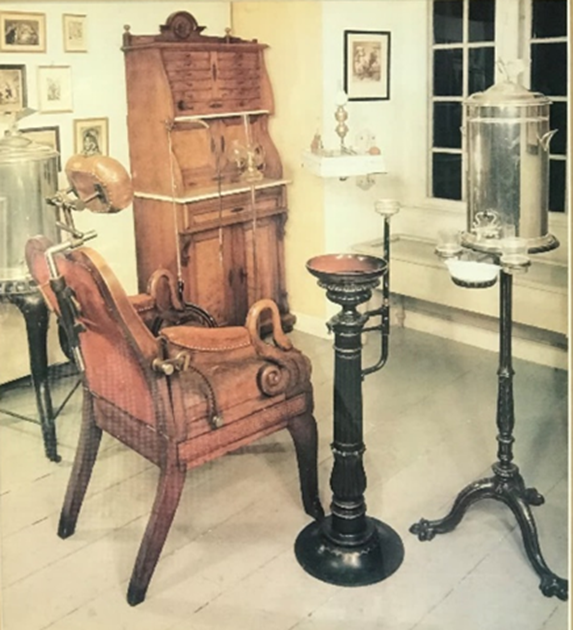
Photo of GV Black's surgery room reconstruction in National Museum of Dentistry, Baltimore. ADAQ Archives.
In a 1876 catalogue, the Swan Chair and footrest were already listed as cheaper options, available with either red or green plush or moquette (carpet) and were offered in Walnut, Imitation Rosewood or Mahogany for about US$79.
If price was no object, one might consider buying the newer Harris dental chair, state of the art at that time, and over double the price!
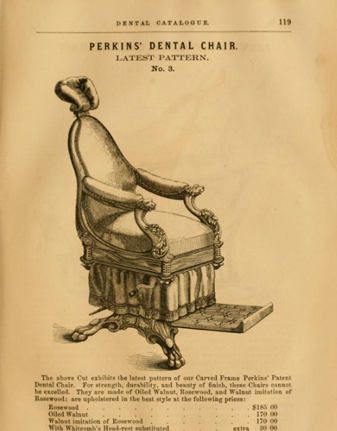
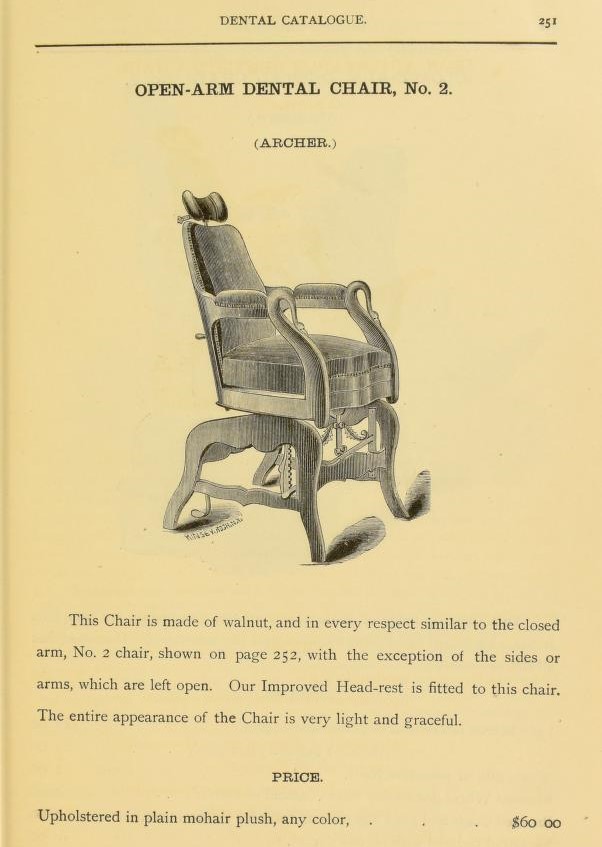
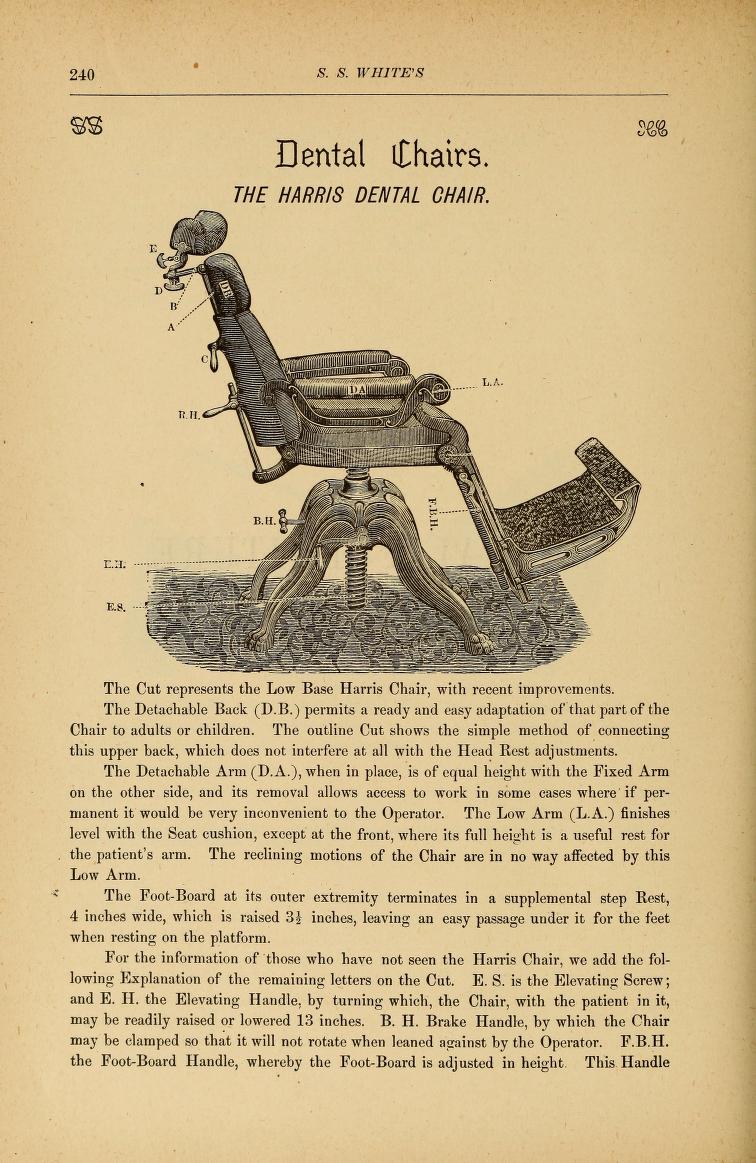
All-metal frames
Samuel S White researched extensively dentists’ needs and came up with the first all-metal frame dental chair in 1871.
ADAQ’s SS White pedal-lever reclining chair, late 1890s, is based on the Harris. It has a spittoon and rotating instrument tray attachment. Acquired in bad shape, it was reupholstered and repainted in 2019 for display purposes.
The Morrison Chair
Patented in 1872 by James Beal Morrison. With its range of movement, this chair finally allows the dentist to work in a sitting position, rather than standing. It is the true precursor of the modern dental chair.
Hydraulic chair
The late 1870s saw hydraulic mechanisms (for raising) and levers replace the cranks, and a Wilkerson model even achieved a full horizontal setting (nicknamed High-Low).
Disk-based Ritter Chair
The idea of a compact base finally eliminated the flaring four legs on which the dentist stubbed his toes.
At the turn of the new century, in particular after WWI, chairs lost their fancy decorations in favour of a cleaner and modern look, and leather cushions often replaced plush.
“...For really it was the refinement of civilized cruelty, this spick, span, and ingenious affair of shining leather and gleaming steel, which hoisted you and tilted you and fitted reassuringly into the small of your back and cupped your head tenderly between padded cushions. [...]
In the old days the victim's attention had at least been distracted by an ache in the back, a crick in the neck, pins and needles in the legs, and the uneasy tickling of plush under the palm. But now, too efficiently suspended between heaven and earth, you were at liberty to concentrate on hell.”
―Excerpt from: At the dentist, in: Jan Struther (1939) Mrs. Miniver.
They could also be easily customised to accommodate younger children.
While new models were developed, the changes were cosmetic and highly standardised. The new designs also reflected the new need to show cleanliness: the sterile look took hold.
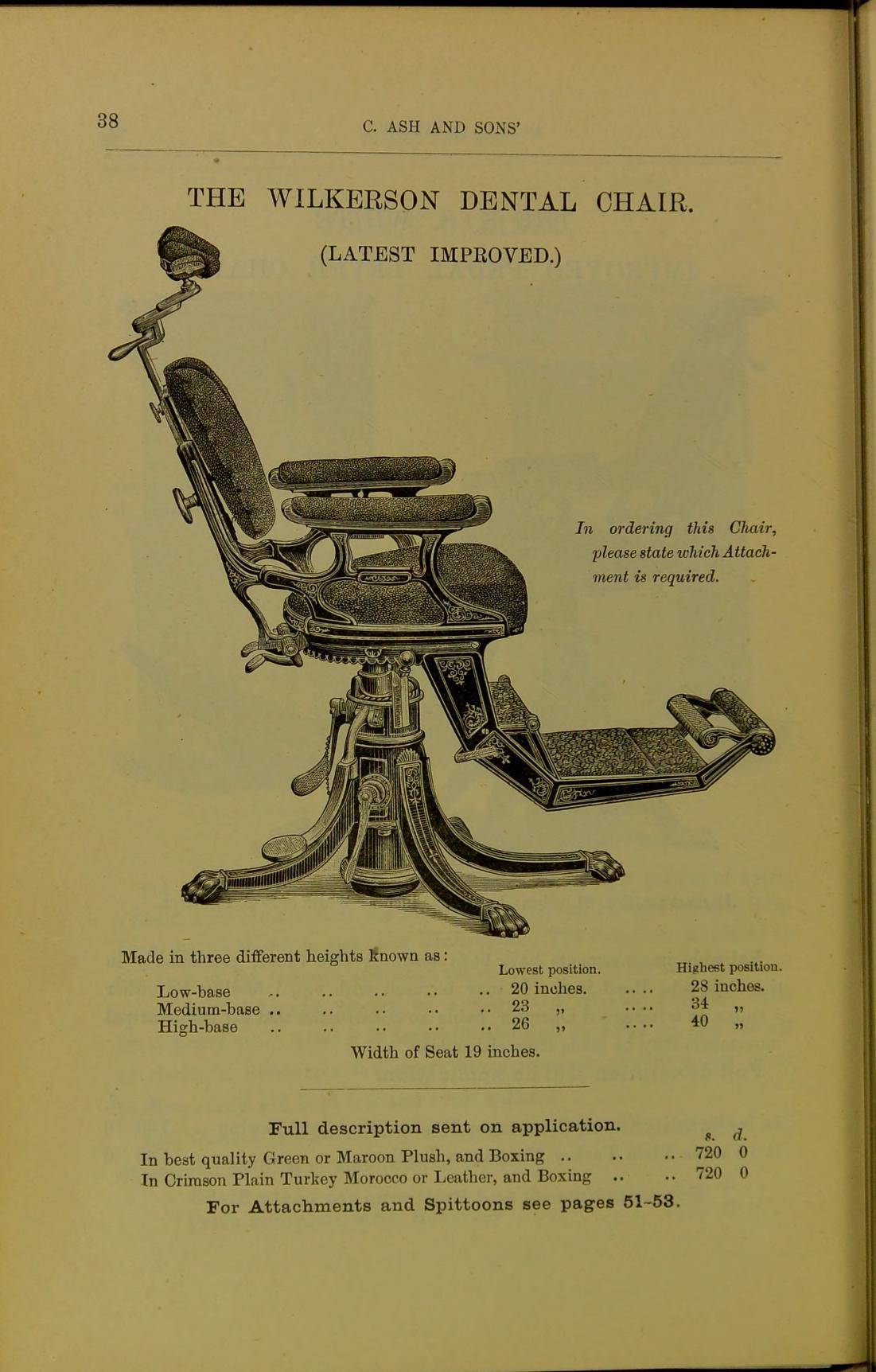
Motorised and integrated
Sit-down dentistry becomes the standard practice, with chairs becoming contoured and slimmer.
The SS White Diamond chairs (1908-1935) are a good example, with their newly anatomically formed seats and backrests. The Diamond chair could be adapted for the ‘extraction specialist’ by adding heavy leather straps and a plain floorboard foot rest.
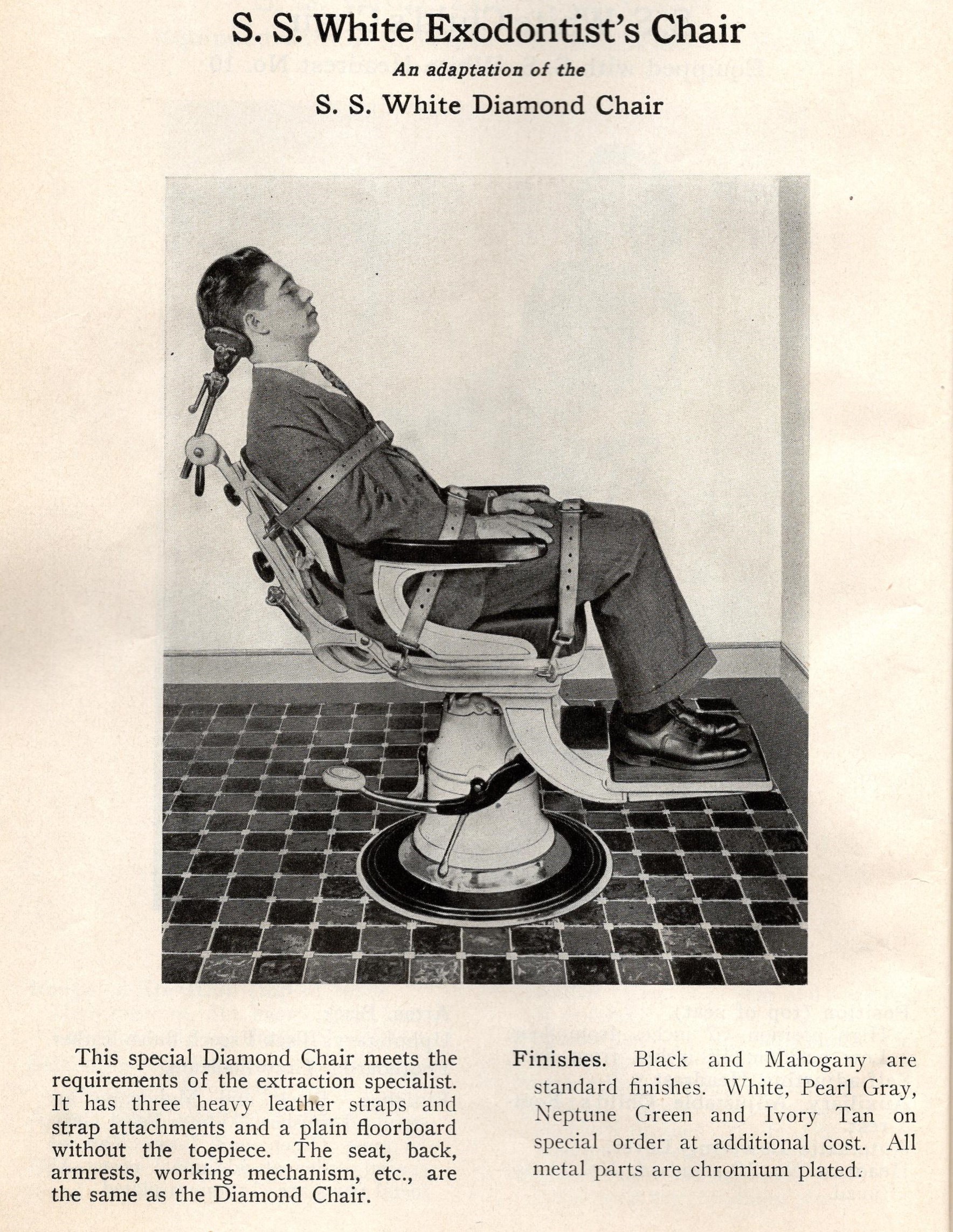
SS White 1930s exodontist chair. SS White catalogue
These chairs were very easy to operate, however still required a bit of effort to pump up into a higher position. This all changed with the introduction of electricity, now more easily available in the surgery settings.
The first electric-driven dental chairs were available in the 1920s-1930s.
They were partnered with equipment units in matching finishes. Black and mahogany were standard; white pearl grey, Neptune green and ivory tan were available on special order at additional cost.
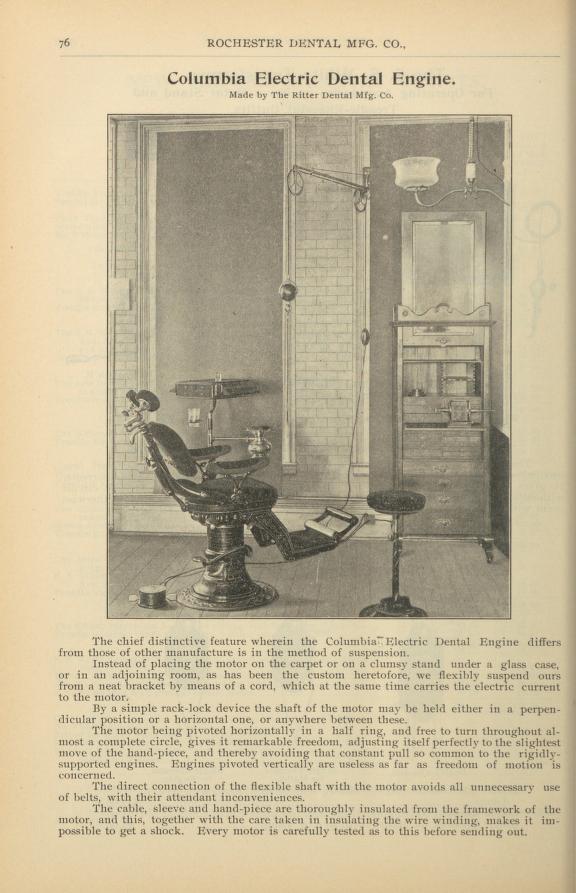
Automatic and ergonomic
In the XX century, a chairside space without obstruction and suitable for four-handed work becomes increasingly important for efficient and quick service
As sit-down dentistry becomes the norm, the patient is in a supine position and the dentist sits on an operating stool behind the patients’ head.
The Ritter-Euphorian In 1954 the American Sanford S. Golden developed a fully reclining dental chair. It was released to the market in 1958 as the Ritter-Euphorian. While it made its way into various dental schools, it wasn’t a
commercial success because of high cost and its one-piece design.
The DentalEZ series J
After meeting with dentists in 1958 to explore their real needs, John Naughton designed a similar chair with a more flexible seat design. His Den-Tal-Ez JChair® became the progenitor of the chairs on which most of us recline today.
The DentalEZ® company discontinued production of this iconic series in 2016. The original is kept at the Smithsonian Museum in Washington DC.
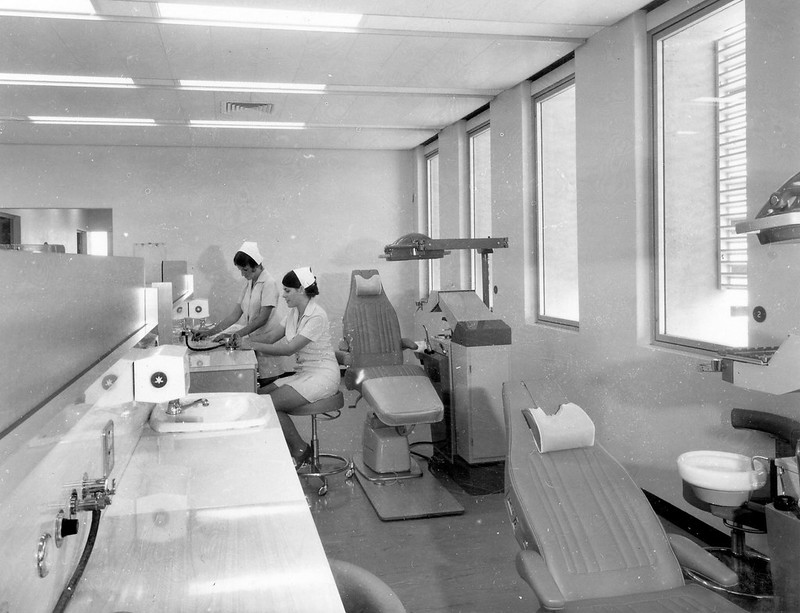
Operative Dental Clinic, Brisbane, 1970. DID24288. Queensland State Archives
Today...
Contemporary chairs are designed for patient comfort, more easily disinfected, and are fully integrated and synced with the dental treatment unit.
The latest models even do away with the pedestal base enhancing dentist’s access to the patient.
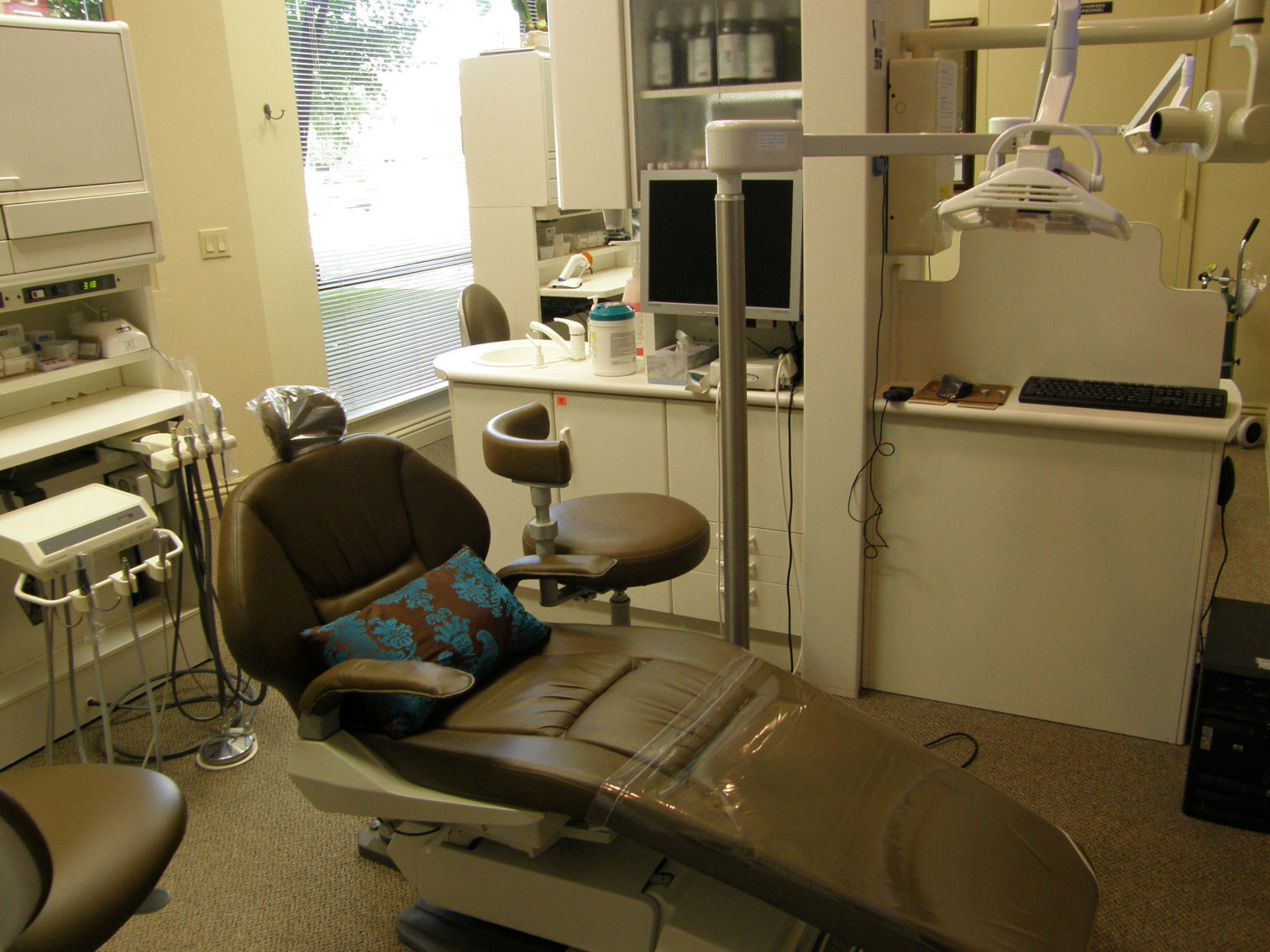
A 2011 dental surgery. Wikicommons.
Sources
Virtual Dental Museum, University of the Pacific, Arthur A. Dugoni School of Dentistry
Glenner, RA 1984 The Dental Office: A Pictorial History
SS White Dental MFG Co. A Century of Service to Dentistry 1844-1944.